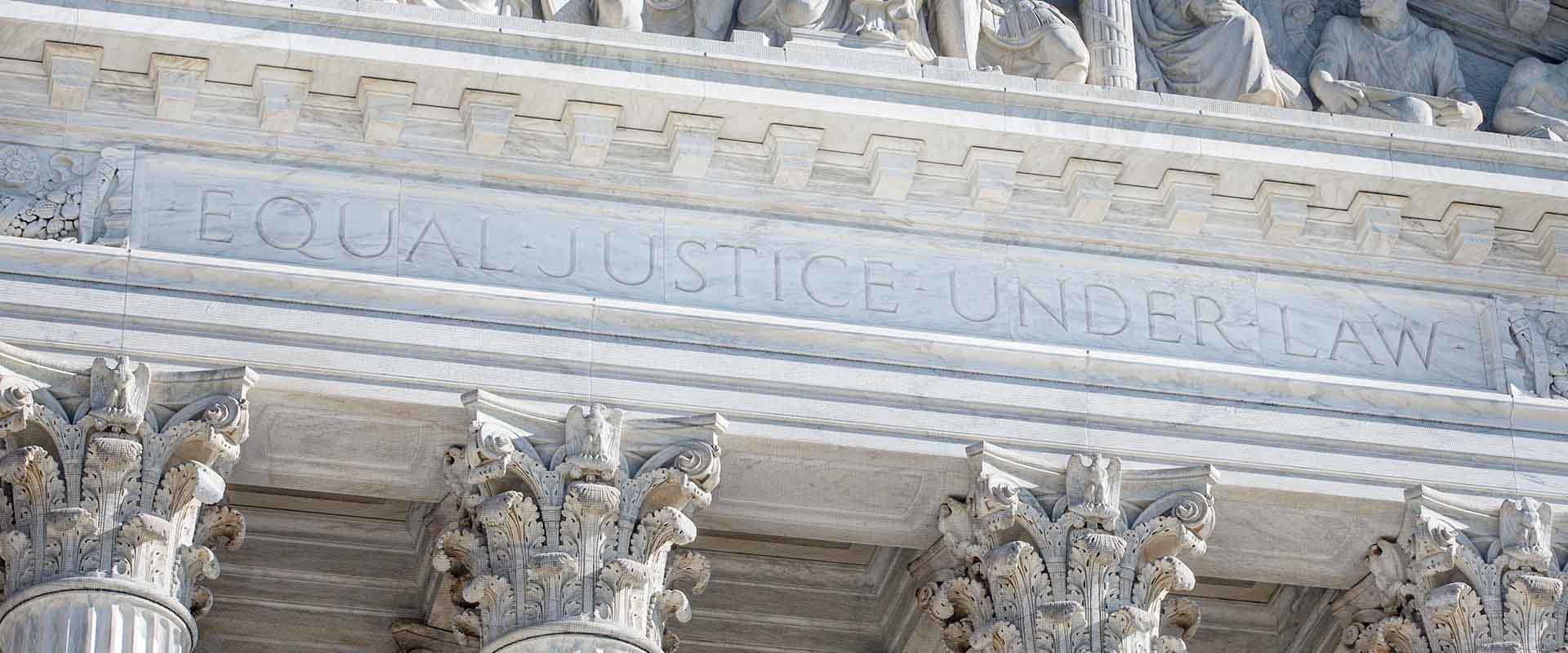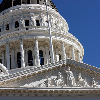Supreme Court Sets Aside Student's Cheer Team Suspension, but Confirms Schools' Authority to Regulate Off-Campus Expression

July 2021
Number 16
In its first student free speech case since 2007, Mahanoy Area School District v. B.L, the United States Supreme Court ruled in favor of a student whose off-campus and off-color social media (Snapchat) posts resulted in her suspension from the school’s junior varsity cheerleading team. The Supreme Court confirmed, however, that schools may still regulate student expression occurring off-campus on a case-by-case basis under the Tinker standard, albeit to a lesser degree than when regulating on-campus student expression.
Background
In the preeminent 1969 student speech opinion, Tinker v. Des Moines Independent Community School District, the Supreme Court articulated a standard wherein “conduct by a student that materially disrupts classwork or involves substantial disorder or invasion of the rights of others” does not enjoy the “constitutional guarantee of freedom of speech.” The facts in Tinker involved speech that took place on campus. For decades, schools and lower courts have grappled with the applicable standard for measuring the regulation of a student’s off-campus expression by school officials, with nearly all courts determining Tinker permits schools to impose consequences on students for off-campus expression, assuming an adequate showing of substantial disruption to the educational environment or infringement on the rights of other students resulting from the student’s expression.
Mahoney Area School District v. B.L.
The B.L. case involved a freshman student who, while outside of school and using her own personal device, expressed in a Snapchat post her displeasure in not making the varsity cheer team, among other subjects of adolescent discontent: “F%$* school f!$@ softball f*%$ cheer f*@$ everything.” The post was sent to only her private friends on Snapchat, and per that social media platform’s functions, was deleted within 24 hours. Other students who saw the post turned over the screenshot to school officials, who then suspended the student from the junior varsity cheerleading team for the upcoming year. The student brought a lawsuit challenging her suspension from cheer as a violation of her First Amendment free speech rights.
The federal district court in B.L. ruled that the school district violated the student’s First Amendment rights, because the district failed to satisfy the Tinker standard with a showing that the student’s speech caused a substantial disruption to the educational environment. The federal appellate Third Circuit affirmed the district court ruling but went farther by holding that schools had no authority to regulate off-campus expression. As such, when on review before the Supreme Court, whether the Tinker standard applies to student speech that occurs off-campus was necessarily at issue.
The Supreme Court’s 8-1 opinion confirms that Tinker applies to off-campus expression, and therefore certain types of student expression occurring outside of the school environment are subject to regulation and potential adverse consequences, including student discipline. However, the court highlighted three principles which confirm the ability of schools to regulate off-campus expression is more limited than when student speech occurs on campus or during a school-related activity.
The first principle is that, when compared to on-campus speech, off-campus speech is much more likely to fall outside of the doctrine of in loco parentis. That is, off-campus speech “will normally fall within the zone of parental, rather than school-related, responsibility.” The second principle is that, schools’ off-campus speech regulation, together with on-campus speech regulation, would functionally permit schools to regulate a student’s speech 24-hours a day, seven days a week—a concept the court found constitutionally untenable. Third, as “nurseries of democracy,” schools have a duty to protect expression, even unpopular expression, as a way to transmit the ideals necessary for “our representative democracy.” Although the court made clear these principles limit a school’s ability to regulate speech, it left for future cases precisely “where, when, and how” a school’s interest may override the features of First Amendment protection.
Accounting for these limiting principles, on the facts at issue in B.L., the court concluded that the student’s off-campus expression was beyond the school’s authority to discipline for or otherwise regulate. The student made the offending posts outside of school hours, on a non-school device, at a non-school location, and there was no reason to think the student’s parents had delegated the school control over the student’s behavior. Further, the posts did not identify the school or any school staff. Further still, the off-campus expression did not cause a substantial disruption to the educational environment or the extracurricular activity of the cheerleading squad. The court noted that the purported on-campus disruption was based upon 10 minutes of discussion in a school algebra class taught by one of the cheer coaches. As to purported concerns over cheer team morale, the court found such concerns insufficient. Put another way, the evidence did not support a finding that the Snapchat post disrupted school business in the classroom or during extracurricular activities such that it caused more than the “discomfort and unpleasantness that always accompany an unpopular viewpoint.” On these facts, the school’s interest in teaching good manners and avoiding vulgar criticism of staff was outweighed by the student’s First Amendment rights.
Importantly, the court noted various examples of off-campus student speech that may satisfy the Tinker standard and thus be subject to regulation as well as disciplinary and extracurricular consequences. Such examples include sexually harassing expression, bullying, or threats of violence targeting a student, staff member, or school site.
Takeaways
The B.L. opinion makes clear that in certain circumstances, schools may regulate off-campus speech. However, off-campus regulations will be met with skepticism, and their constitutional review will be highly fact-specific. School authorities should consider the three features and the particular facts outlined in B.L. before disciplining students for off-campus speech. This said, the Supreme Court’s opinion validates the conclusions, approaches, and factors described by courts within the Ninth Circuit (governing California schools) over the past decade-plus, and is unlikely to result in a significant change in the case-by-case, fact-specific analysis which schools must apply when determining whether to regulate and impose consequences for off-campus student expression. Correspondingly, to the extent the Education Code permits student discipline for harassment, threats, and bullying, conduct which might take place via off-campus expression, assuming the Tinker standard is met, disciplinary or other corrective measures in response to such student behavior will remain viable under B.L., assuming a case-by-case review by school officials that accounts for the limiting principles identified by the Court.
If you have questions about this ruling or need more information regarding the discipline of students for off-campus or online speech or about student free speech rights in general, please contact the authors of this Client News Brief or an attorney at one of our eight offices located statewide. You can also subscribe to our podcast, follow us on Facebook, Twitter and LinkedIn or download our mobile app.
Number 16
In its first student free speech case since 2007, Mahanoy Area School District v. B.L, the United States Supreme Court ruled in favor of a student whose off-campus and off-color social media (Snapchat) posts resulted in her suspension from the school’s junior varsity cheerleading team. The Supreme Court confirmed, however, that schools may still regulate student expression occurring off-campus on a case-by-case basis under the Tinker standard, albeit to a lesser degree than when regulating on-campus student expression.
Background
In the preeminent 1969 student speech opinion, Tinker v. Des Moines Independent Community School District, the Supreme Court articulated a standard wherein “conduct by a student that materially disrupts classwork or involves substantial disorder or invasion of the rights of others” does not enjoy the “constitutional guarantee of freedom of speech.” The facts in Tinker involved speech that took place on campus. For decades, schools and lower courts have grappled with the applicable standard for measuring the regulation of a student’s off-campus expression by school officials, with nearly all courts determining Tinker permits schools to impose consequences on students for off-campus expression, assuming an adequate showing of substantial disruption to the educational environment or infringement on the rights of other students resulting from the student’s expression.
Mahoney Area School District v. B.L.
The B.L. case involved a freshman student who, while outside of school and using her own personal device, expressed in a Snapchat post her displeasure in not making the varsity cheer team, among other subjects of adolescent discontent: “F%$* school f!$@ softball f*%$ cheer f*@$ everything.” The post was sent to only her private friends on Snapchat, and per that social media platform’s functions, was deleted within 24 hours. Other students who saw the post turned over the screenshot to school officials, who then suspended the student from the junior varsity cheerleading team for the upcoming year. The student brought a lawsuit challenging her suspension from cheer as a violation of her First Amendment free speech rights.
The federal district court in B.L. ruled that the school district violated the student’s First Amendment rights, because the district failed to satisfy the Tinker standard with a showing that the student’s speech caused a substantial disruption to the educational environment. The federal appellate Third Circuit affirmed the district court ruling but went farther by holding that schools had no authority to regulate off-campus expression. As such, when on review before the Supreme Court, whether the Tinker standard applies to student speech that occurs off-campus was necessarily at issue.
The Supreme Court’s 8-1 opinion confirms that Tinker applies to off-campus expression, and therefore certain types of student expression occurring outside of the school environment are subject to regulation and potential adverse consequences, including student discipline. However, the court highlighted three principles which confirm the ability of schools to regulate off-campus expression is more limited than when student speech occurs on campus or during a school-related activity.
The first principle is that, when compared to on-campus speech, off-campus speech is much more likely to fall outside of the doctrine of in loco parentis. That is, off-campus speech “will normally fall within the zone of parental, rather than school-related, responsibility.” The second principle is that, schools’ off-campus speech regulation, together with on-campus speech regulation, would functionally permit schools to regulate a student’s speech 24-hours a day, seven days a week—a concept the court found constitutionally untenable. Third, as “nurseries of democracy,” schools have a duty to protect expression, even unpopular expression, as a way to transmit the ideals necessary for “our representative democracy.” Although the court made clear these principles limit a school’s ability to regulate speech, it left for future cases precisely “where, when, and how” a school’s interest may override the features of First Amendment protection.
Accounting for these limiting principles, on the facts at issue in B.L., the court concluded that the student’s off-campus expression was beyond the school’s authority to discipline for or otherwise regulate. The student made the offending posts outside of school hours, on a non-school device, at a non-school location, and there was no reason to think the student’s parents had delegated the school control over the student’s behavior. Further, the posts did not identify the school or any school staff. Further still, the off-campus expression did not cause a substantial disruption to the educational environment or the extracurricular activity of the cheerleading squad. The court noted that the purported on-campus disruption was based upon 10 minutes of discussion in a school algebra class taught by one of the cheer coaches. As to purported concerns over cheer team morale, the court found such concerns insufficient. Put another way, the evidence did not support a finding that the Snapchat post disrupted school business in the classroom or during extracurricular activities such that it caused more than the “discomfort and unpleasantness that always accompany an unpopular viewpoint.” On these facts, the school’s interest in teaching good manners and avoiding vulgar criticism of staff was outweighed by the student’s First Amendment rights.
Importantly, the court noted various examples of off-campus student speech that may satisfy the Tinker standard and thus be subject to regulation as well as disciplinary and extracurricular consequences. Such examples include sexually harassing expression, bullying, or threats of violence targeting a student, staff member, or school site.
Takeaways
The B.L. opinion makes clear that in certain circumstances, schools may regulate off-campus speech. However, off-campus regulations will be met with skepticism, and their constitutional review will be highly fact-specific. School authorities should consider the three features and the particular facts outlined in B.L. before disciplining students for off-campus speech. This said, the Supreme Court’s opinion validates the conclusions, approaches, and factors described by courts within the Ninth Circuit (governing California schools) over the past decade-plus, and is unlikely to result in a significant change in the case-by-case, fact-specific analysis which schools must apply when determining whether to regulate and impose consequences for off-campus student expression. Correspondingly, to the extent the Education Code permits student discipline for harassment, threats, and bullying, conduct which might take place via off-campus expression, assuming the Tinker standard is met, disciplinary or other corrective measures in response to such student behavior will remain viable under B.L., assuming a case-by-case review by school officials that accounts for the limiting principles identified by the Court.
If you have questions about this ruling or need more information regarding the discipline of students for off-campus or online speech or about student free speech rights in general, please contact the authors of this Client News Brief or an attorney at one of our eight offices located statewide. You can also subscribe to our podcast, follow us on Facebook, Twitter and LinkedIn or download our mobile app.
As the information contained herein is necessarily general, its application to a particular set of facts and circumstances may vary. For this reason, this News Brief does not constitute legal advice. We recommend that you consult with your counsel prior to acting on the information contained herein.





